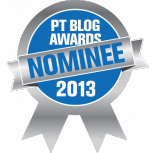 Language is our primary means of expression and communication. Yes, we use non-verbal communication strategies and yes, they have a significant impact on our ability to establish rapport. However, language itself is important in conveying a message and expressing our thoughts, our hopes, and our dreams. Language is power, but with power comes responsibility. And that responsibility is based on context and intent.
Language is our primary means of expression and communication. Yes, we use non-verbal communication strategies and yes, they have a significant impact on our ability to establish rapport. However, language itself is important in conveying a message and expressing our thoughts, our hopes, and our dreams. Language is power, but with power comes responsibility. And that responsibility is based on context and intent.
However, language is often manipulated, at times irresponsibly. Context can be twisted to support a narrative by attending to just one phrase within a sentence without doing due diligence to the remainder of the sentence. Values are oftentimes projected on the perceived “intent” of the language, either erroneously or purposefully to accommodate a hidden (or not so hidden) agenda.
Unfortunately, this happens far too regularly in our society now. Two examples bring this to light.
The first example is the contributions made by researchers attempting to better understand COVID-19. The researchers have provided us with language and context, and that language and context is evolving. Scientific research is dynamic. It is up to us to understand the language, put it in the appropriate scientific context, and consider both through the lens of critical thinking - while not imparting our agenda or deeply-held beliefs on what we perceive the intent of those words was or should be. All we have is language, context, and critical thinking.
However, there are countless armchair researchers who take liberty in projecting their own beliefs and values as perceived “intent” of the language and context and pass it off as the “truth”.
The second example is the contributions made by the Founding Fathers in the form of the Bill of Rights. The Founding Fathers have provided us with language (at times grammatically challenged) within a specific historical context. The context we’ve been provided indicates that these documents were in themselves a starting point, not an ending; we have the Amendments to confirm this evolution. Once again, it is up to us to understand the language, put it in the appropriate historical context, and consider both through the lens of critical thinking - while not imparting our agenda or deeply-held beliefs on what we perceive the intent of those words was or should be.
However, there are countless kitchen table constitutionalists who, once again, take liberty in projecting their own beliefs and values as perceived “intent” of the language and context and pass it off as the “truth”.
All of this is made worse when you’re trying to defend your position instead of listening to another’s position. If you’re not actively seeking to understand, then you’re caught in monologue and not dialogue - or as I like to call it, an exchange of soapbox speeches. Dialogue, the root of communication, will always be more enlightening than monologue.
These examples underscore the importance of taking the time to understand the language as written, the context in which it is written, and to not assume the intent of those words based on your own deeply-held beliefs and values. All of this becomes even more important in today’s society which is becoming more polarized, hypocritical, and angry on so many levels. Have we forgotten, or chosen to forget, the importance of language, context, and intent? Have we forgotten the need for dialogue and due consideration of the miles walked in another person’s shoes and their use of language and context to share that experience and communication?
Let us not forget that the truth is found in this power trio through a lens of critical thinking, self-responsibility, and true dialogue. Context is key, and in the end, language matters.
Photo credits: Allan Besselink
| < Prev | Next > |
|---|
 "Running Injuries: Etiology And Recovery- Based Treatment" (co-author Bridget Clark, PT) appears in the third edition and fourth editions of "Clinical Orthopaedic Rehabilitation: A Team Approach" by Charles Giangarra, MD and Robert C. Manske, PT.
"Running Injuries: Etiology And Recovery- Based Treatment" (co-author Bridget Clark, PT) appears in the third edition and fourth editions of "Clinical Orthopaedic Rehabilitation: A Team Approach" by Charles Giangarra, MD and Robert C. Manske, PT.
 Allan Besselink, PT, DPT, Ph.D., Dip.MDT has a unique voice in the world of sports, education, and health care. Read more about Allan here.
Allan Besselink, PT, DPT, Ph.D., Dip.MDT has a unique voice in the world of sports, education, and health care. Read more about Allan here.
 Top 5 finalist in three categories: "Best Overall Blog", "Best PT Blog" and "Best Advocacy Blog".
Top 5 finalist in three categories: "Best Overall Blog", "Best PT Blog" and "Best Advocacy Blog".